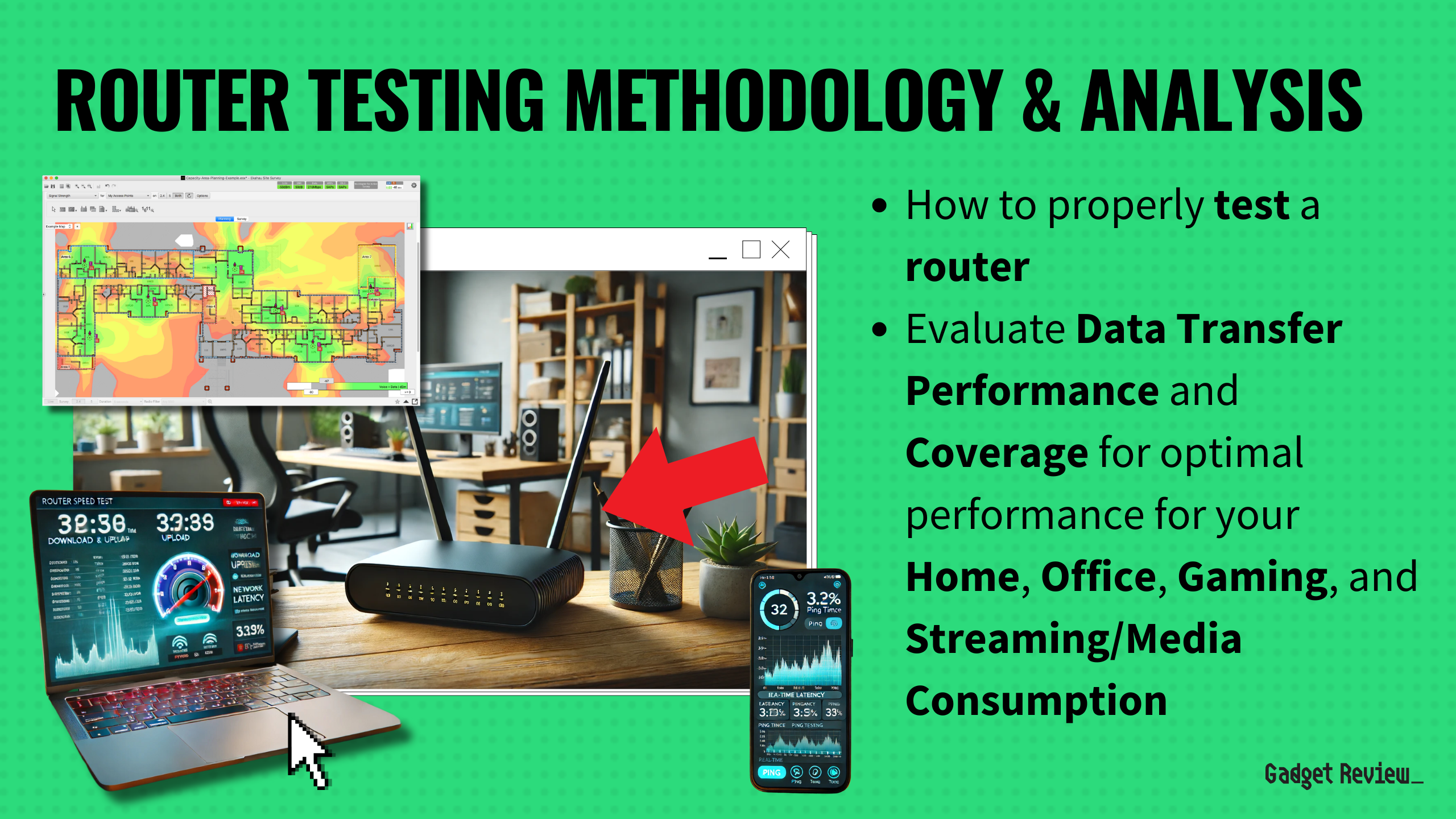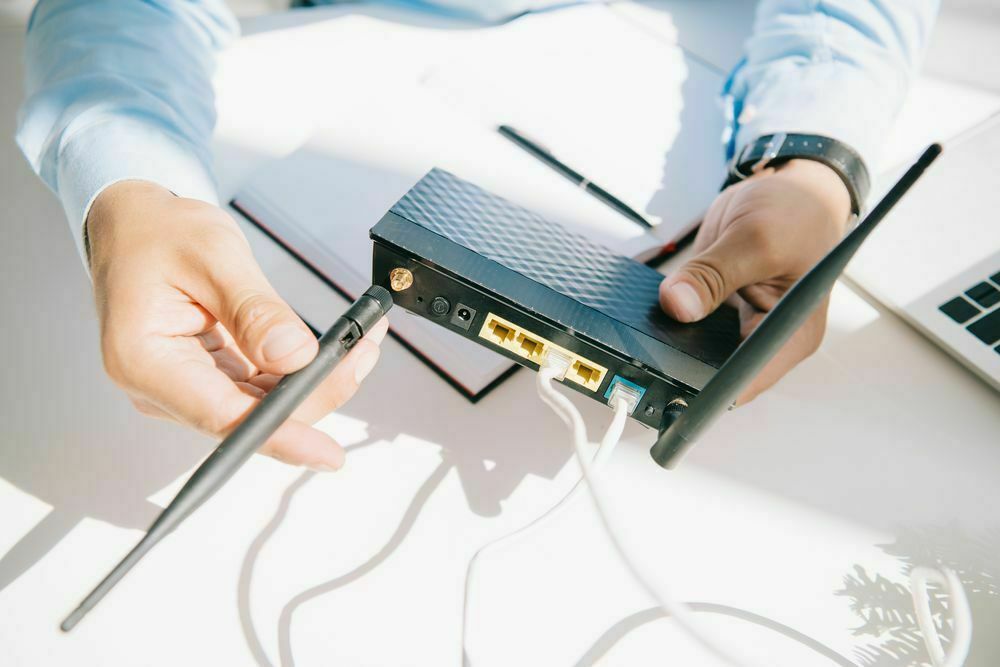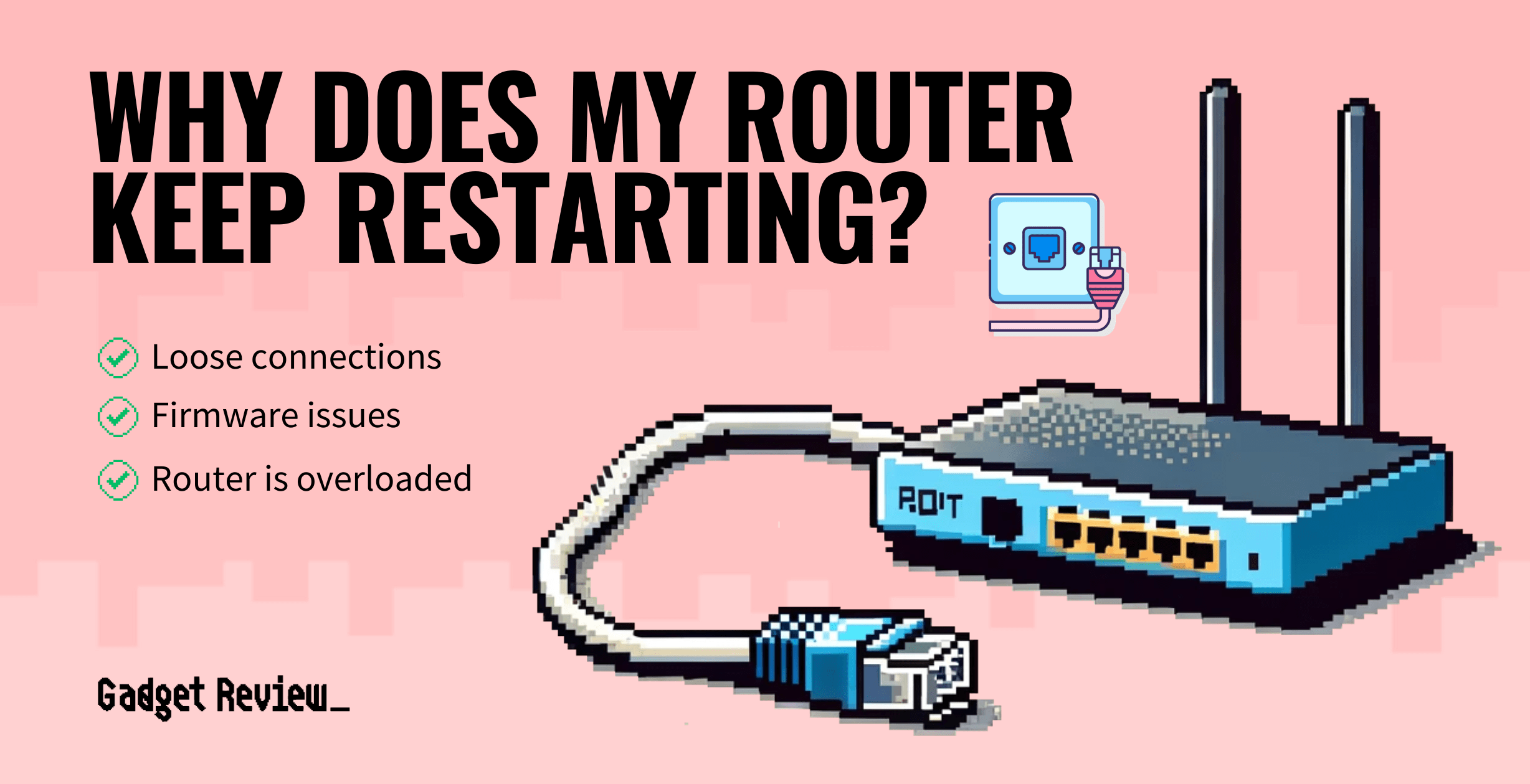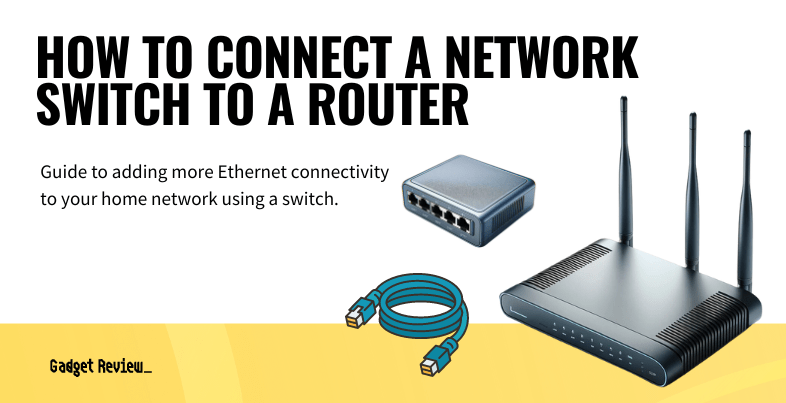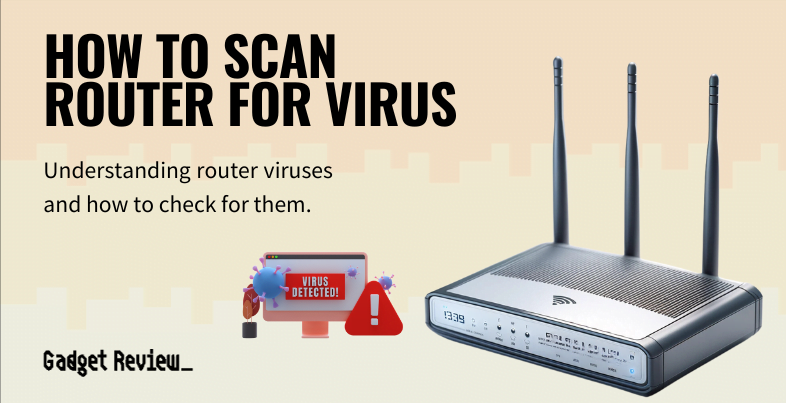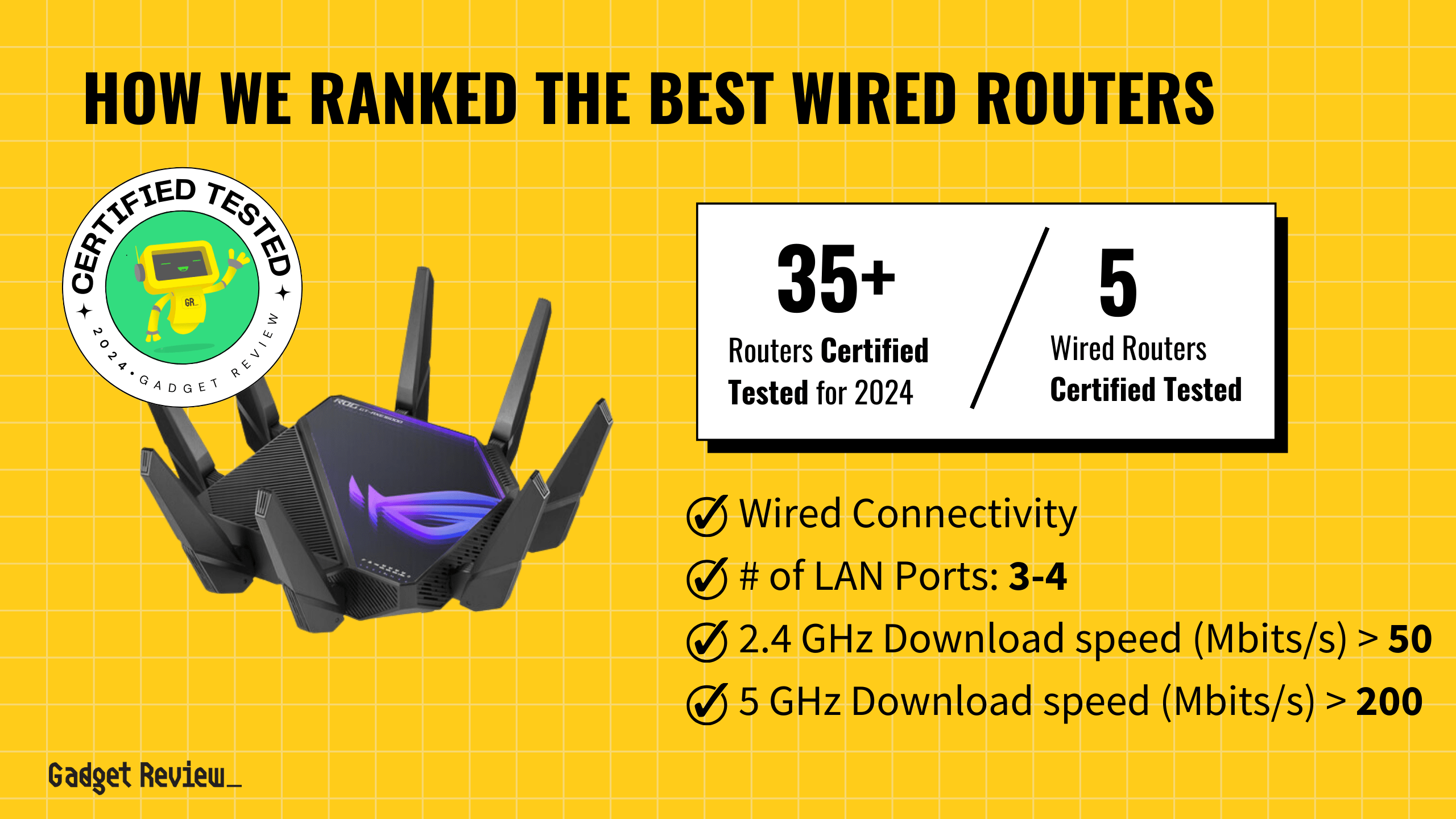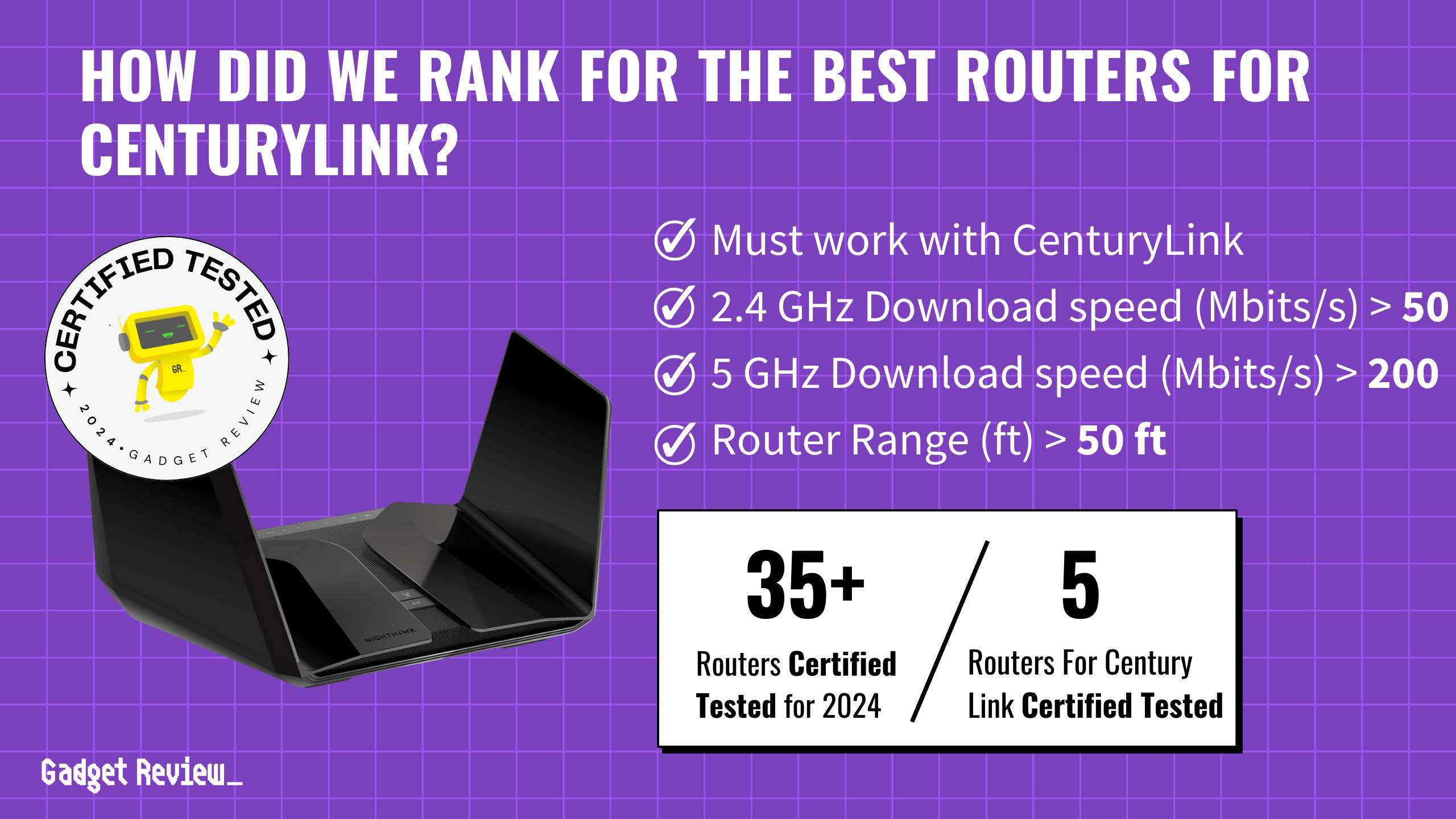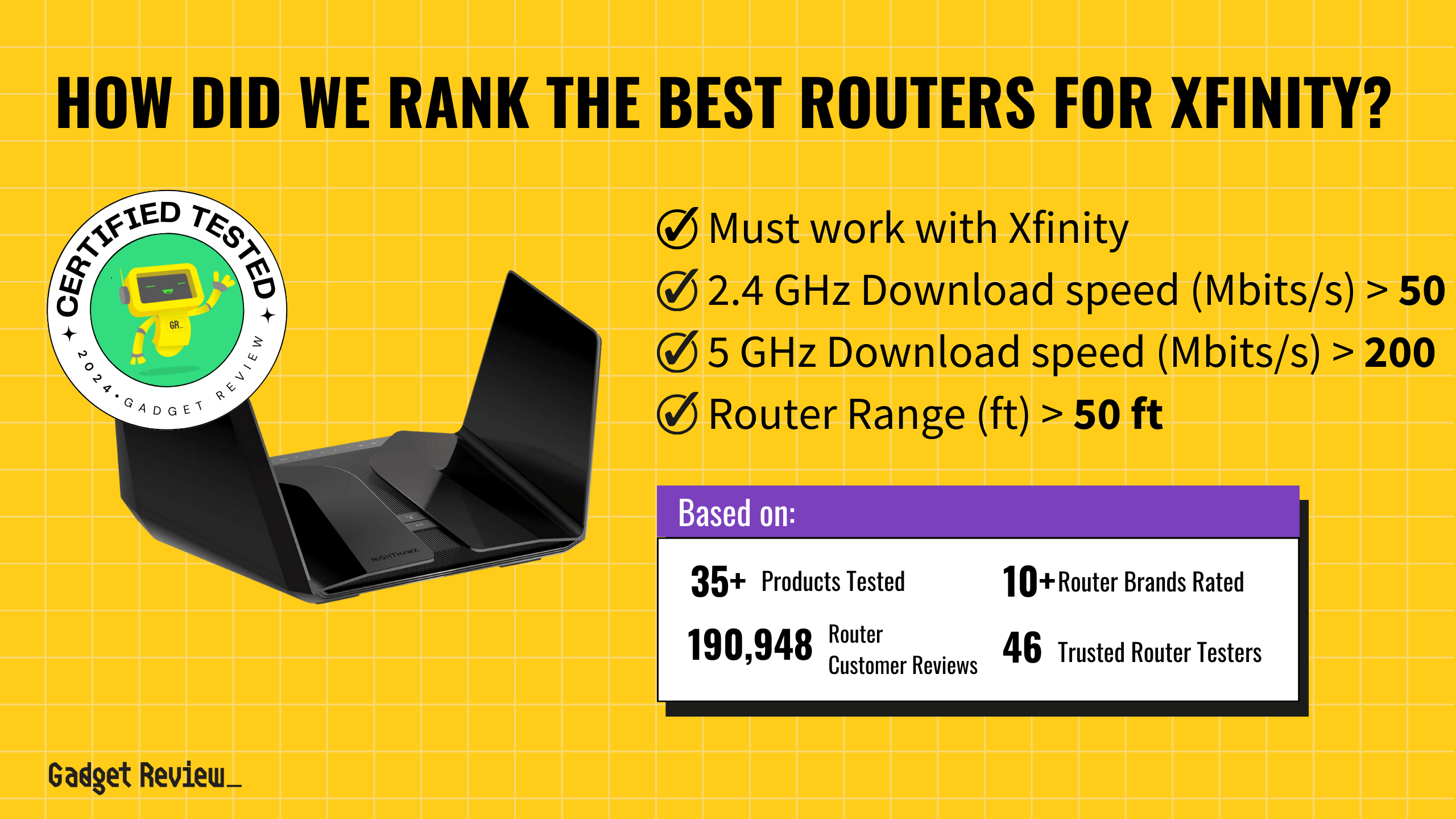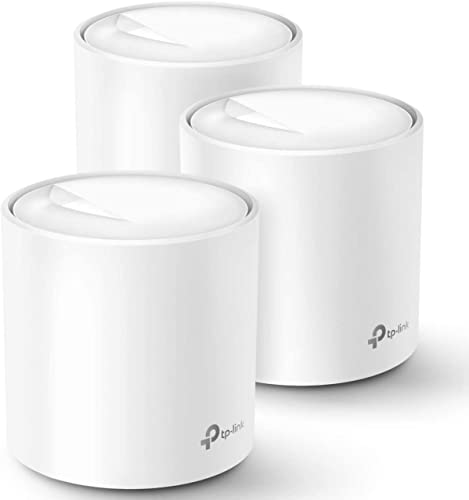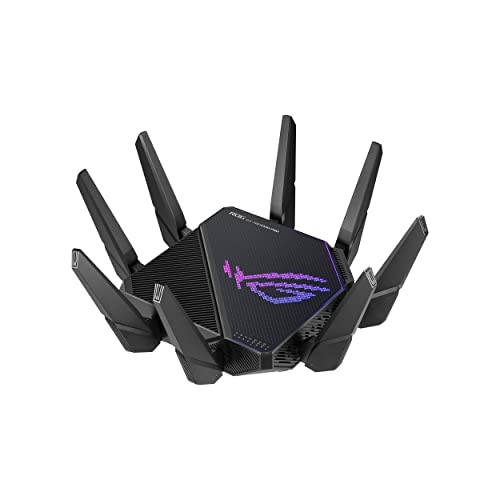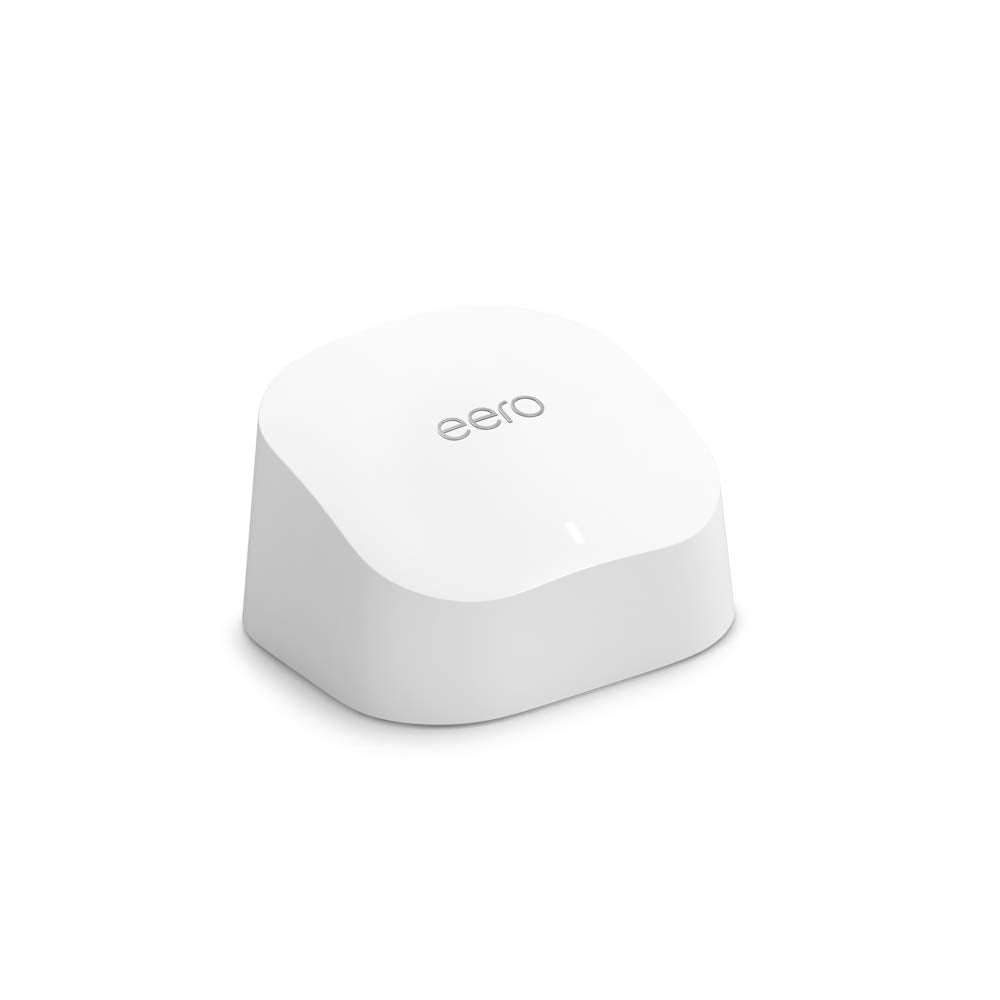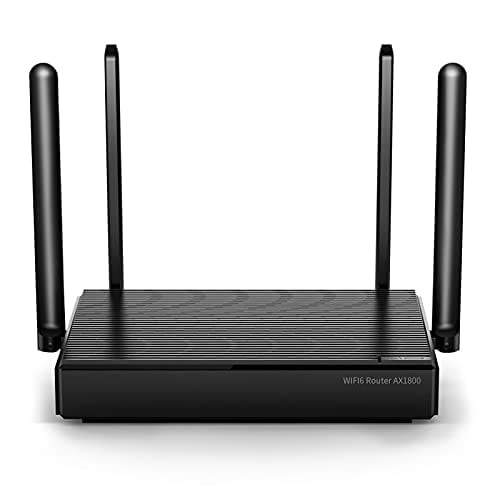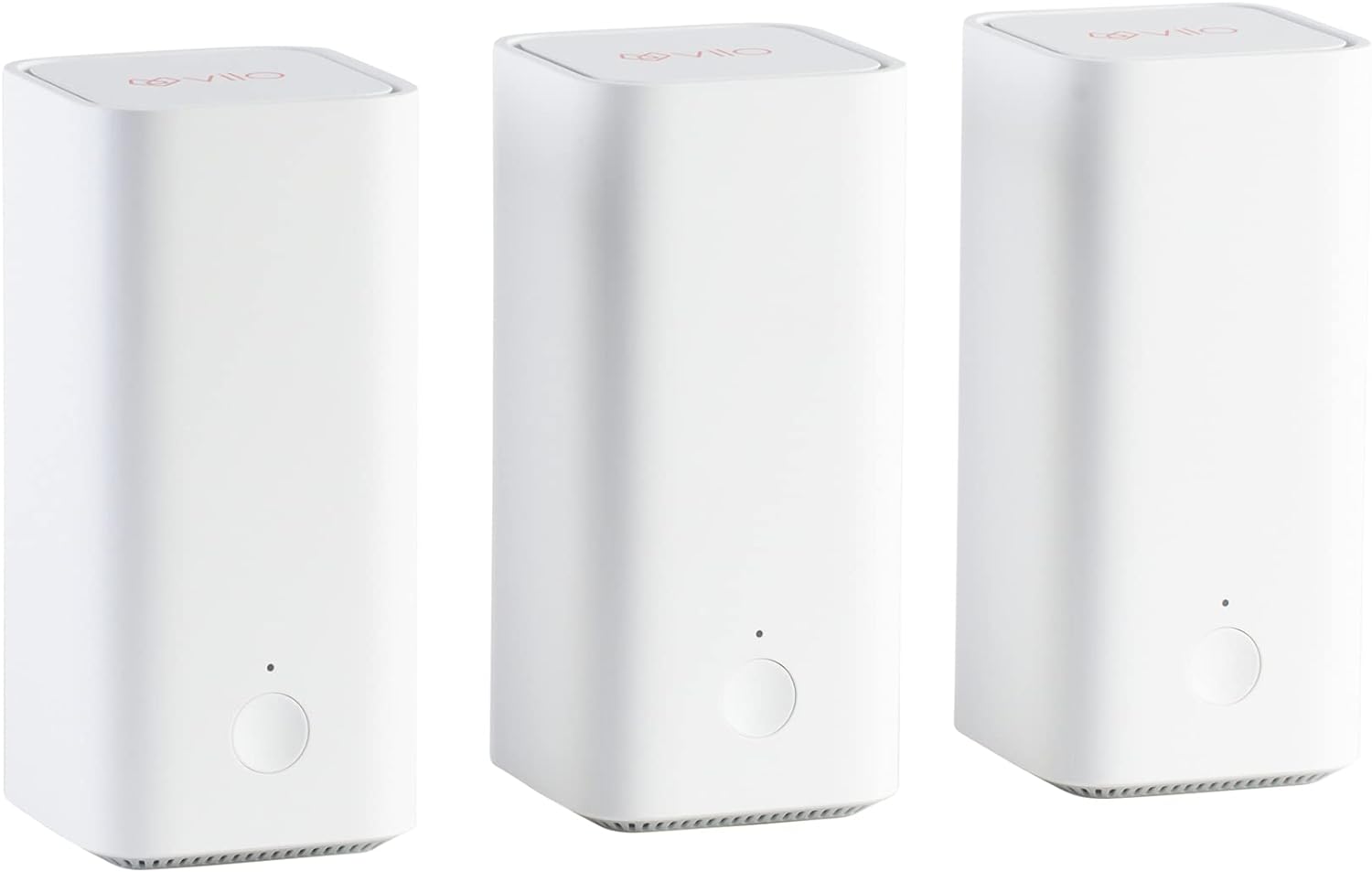When choosing the best Wi-Fi routers with parental controls, look for models that offer robust security, ease of use, and reliable performance. Features like user-friendly setup, effective bandwidth management, and comprehensive parental controls are crucial. Out of 43 routers evaluated, 6 stood out due to their exceptional performance in our certification.
We analyzed 194,424 reviews, and many experts failed our trustworthiness standards. Our unique approach uses our proprietary True Score system to filter out fake and low-quality reviews, ensuring the winning routers excel in real-world testing and parental control features. These excellent routers offer the best balance of speed, reliability, and ease of use for families.
How Did We Rank the Best Wi-Fi Routers With Parental Controls?
When it comes to finding the best Wi-Fi routers with parental controls, our guide stands out due to our meticulous research process. We reviewed over 200 websites, analyzing testing methods and reviews from both customers and experts. This comprehensive approach allowed us to identify 2 vital test results, 2 useful features, and 1 crucial specification. Our guide simplifies your decision-making, presenting only the top routers that excel in performance and parental control capabilities.
Our commitment to unbiased reviews is powered by our ‘True Score’ system, targeting low quality and fake reviews. When you shop through our links, you’re backing our mission. Dive deeper to see how.
?️ Minimum Specifications
- Must have parental controls.
? Test Criteria
- 2.4 GHz Download Speed: A download speed on the 2.4 GHz band of at least 50 Mbits.
- 5 GHz Download Speed: A download speed on the 5 GHz band of at least 200 Mbits.
? “Nice To Haves”
- Router Range: A range of at least 50 feet before the signal from the router begins to become noticeably weaker.
- Latency: A latency of 30 ms or less.
Latest Updates
- 06/18/2024: Republished the list to include the best Wi-Fi routers with parental controls based on our True Score system.
Top Wi-Fi Routers With Parental Controls For 2025
Prices accurate at the time of publishing

Best Overall

Runner Up

Best Value

Best Budget

Best Mid-Range

Premium Pick
Asus ROG GT-AXE16000
Best For Vpn
If top-notch parental controls are a priority, consider the Asus ROG GT-AXE16000. Its exceptional speeds ensure reliable internet for efficient monitoring.
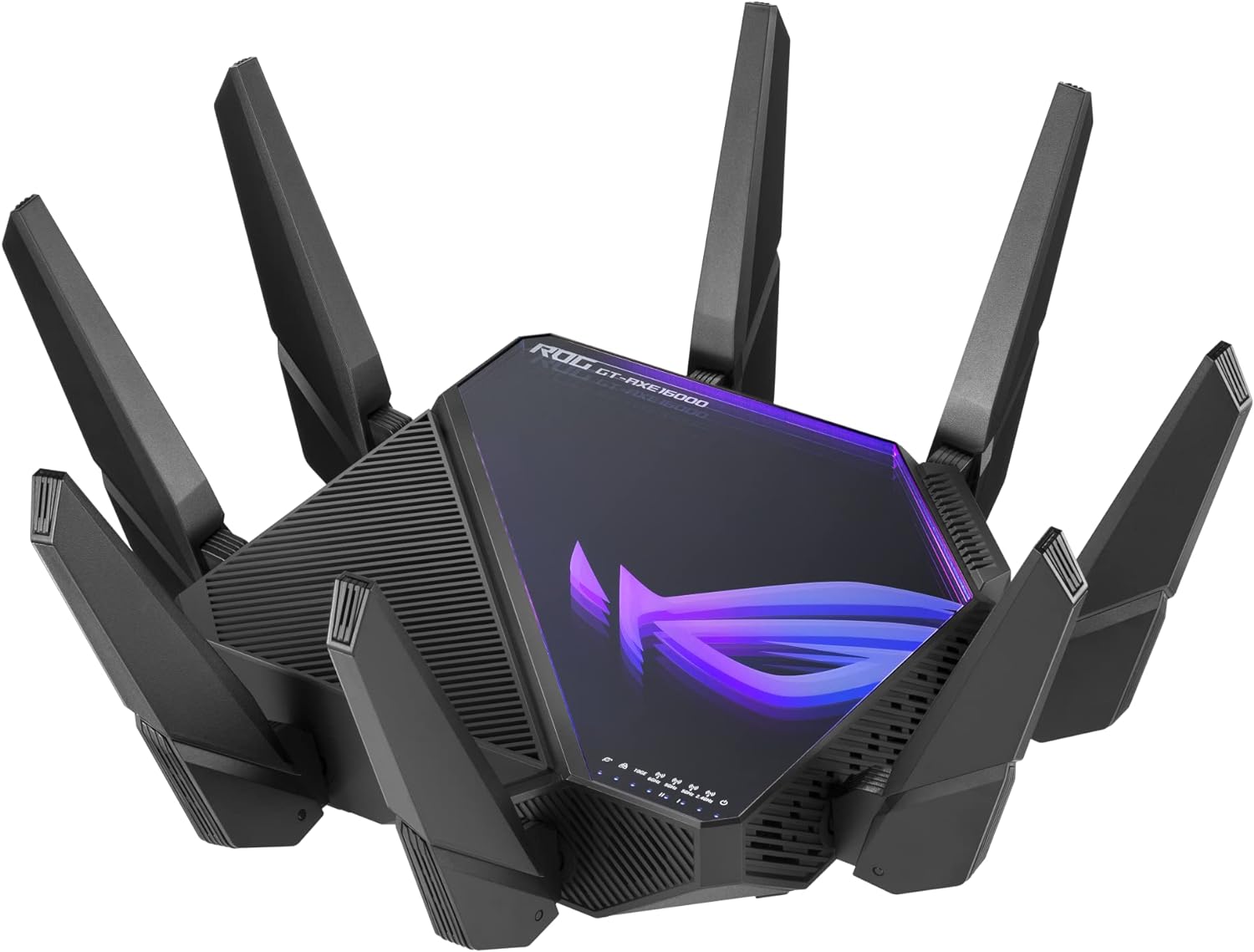
True Score
85865Experts
901kCustomers
Absolutely Fresh
 SAVE $251$699.99$449.00
SAVE $251$699.99$449.00Read More
Snapshot
Reasons to Buy
- Good WiFi Upload/Download Speed
- Easy to Setup and Configure
- Impressive Range of Coverage
Reasons to Avoid
- Poor Latency
Specifications

# of LAN Ports 4 
Frequency Bands 2.4 GHz, 5 GHz-1, 5 GHz-2, 6.0 GHz 
MU-MIMO Support Yes 
Wireless Standard AX 
Mesh System Yes 
Quality of Service Prioritization Yes 
# of Phone Ports n/a 
# of WAN Ports 3 
App Compatible Yes 
Available Storage 256MB 
Band Technology Quad 
Data Encryption Type WPA3 
Energy Star Certified n/a 
Integrated Modem No 
LAN Ports – 
Number of Antennas 8 
Parental Controls Yes 
Processor Cores Quad 
Processor Speed 2 Ghz 
WiFi Range 8000 sq.ft 
WiFi Speed 16Gb 
Wired Speed 1000 Mb All Specs
Test Results
2.4 GHz Download speed (Mbits/s) 113 5 GHz Download speed (Mbits/s) 639 6 Ghz Download speed (Mbits/s) 615 Latency (ms) 69 Router Range (ft) 0 2.4 GHz Upload speed (Mbits/s) 154 5 GHz Upload speed (Mbits/s) 790 6 Ghz Upload speed (Mbits/s) 790 All Tests
All Retailers
- $449.00$700Save $251
- $599.99
Our Verdict
If you’re seeking a WiFi router with excellent parental controls, the Asus ROG GT-AXE16000 stands out for its exceptional performance, particularly notable for its impressive 2.4 GHz and 5 GHz download speeds of 112.88 Mbits/s and 639.1 Mbits/s, respectively. These speeds ensure a reliable and swift internet connection, crucial for managing and monitoring online activities efficiently, thus offering a robust platform for implementing comprehensive parental controls.
The Asus ROG GT-AXE16000 boasts advanced features like mesh system support, ensuring extensive coverage across larger homes. This router’s capacity for data encryption and quality of service prioritization further enhances its appeal for a family-oriented setup, safeguarding sensitive information and ensuring priority is given to critical tasks. Its compatibility with various apps and MU-MIMO support amplifies its usability, allowing for multiple device connections without compromising speed or security – an essential aspect for households with numerous internet-enabled devices.
Moreover, this router’s performance metrics extend beyond parental control use cases. Unlike the Asus ROG GT6 Mesh, this router has WiFi 6E with impressive 6 GHz download and upload speeds, 615.2 Mbits/s and 790.1 Mbits/s, respectively. Alongside a relatively low latency of 69 ms, it is a formidable option for gaming, streaming, and even small business environments that demand high-speed, reliable internet connections.
While the Asus ROG GT-AXE16000 excels with its parental control features, its robust performance and versatile functionalities make it an excellent choice for various other applications, including high-demand environments like gaming and streaming. Its comprehensive feature set ensures that it’s a tool for managing online safety and a powerhouse for handling demanding online activities.
Read Less

Best Overall

Runner Up

Best Value

Best Budget

Best Mid-Range

Premium Pick
Asus RT-AX86S
Best For Long Range
The Asus RT-AX86S is a budget-friendly router with parental controls. Its impressive speeds and versatile features make it a solid choice for any household.
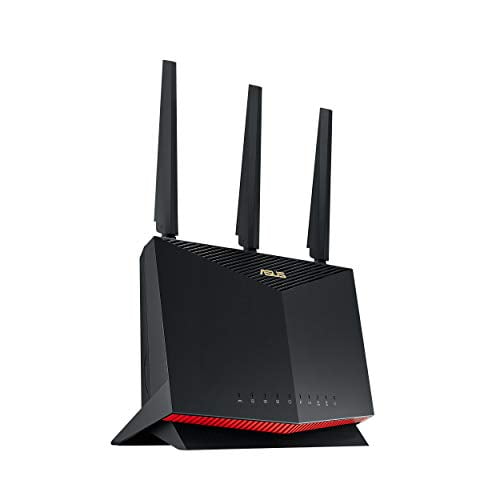
True Score
83833Experts
891kCustomers
Absolutely Fresh
 SAVE $23$225.00$202.24
SAVE $23$225.00$202.24Read More
Snapshot
Reasons to Buy
- Fast WiFi and download speeds
- Incredible range of coverage
- Easy installation and set up
- Low Latency
Reasons to Avoid
- Lacks Backhaul and Mesh Networking
Specifications

# of LAN Ports 4 
Frequency Bands 2.4 GHz, 5.0 GHz 
MU-MIMO Support Yes 
Wireless Standard AC, AX, N 
Mesh System No 
Quality of Service Prioritization Yes 
# of Phone Ports n/a 
# of WAN Ports 1 
App Compatible Yes 
Available Storage 256MB 
Band Technology Dual 
Data Encryption Type WPA, WPA-Enterprise, WPA2, WPA2-Enterprise, WPA3, WPA3-Enterprise, WPS 
Energy Star Certified No 
Integrated Modem No 
LAN Ports 4 Gb Ethernet 
Number of Antennas 4 
Parental Controls Yes 
Processor Cores Dual 
Processor Speed 1.8GHz 
WiFi Range 5400 sq. ft 
WiFi Speed 5.7 Gb 
Wired Speed – All Specs
Test Results
2.4 GHz Download speed (Mbits/s) 89 5 GHz Download speed (Mbits/s) 563 6 Ghz Download speed (Mbits/s) 0 Latency (ms) 15 Router Range (ft) 140 2.4 GHz Upload speed (Mbits/s) 0 5 GHz Upload speed (Mbits/s) 23 6 Ghz Upload speed (Mbits/s) 0 All Tests
All Retailers
- $202.24$225Save $23
- $349.00
Our Verdict
If you’re looking for a WiFi router that excels in parental controls and won’t break the bank, the Asus RT-AX86S is a fantastic budget-friendly option. The Asus RT-AX86S stands out with its impressive 5 GHz download speed of 563 Mbits/s, ensuring that high-speed internet is not just a promise but a reality, making it an excellent choice for households with heavy streaming and gaming activities. This performance is critical in today’s connected homes, where seamless streaming and lag-free gaming are luxuries and necessities.
Delving deeper into its specifications, the Asus RT-AX86S doesn’t disappoint. It supports key features essential for a WiFi router with parental controls, such as a comprehensive mesh system, top-notch data encryption, quality of service prioritization, broad app compatibility, and MU-MIMO support. These specs ensure that you can manage what your children access online effectively and get a stable and secure network across all devices in your home.
Beyond parental controls, the Asus RT-AX86S is versatile across various use cases. Its decent 5 GHz upload speed of 23 Mbits/s and a noteworthy range of 140 ft make it suitable for a wide range of environments, from bustling family homes to small businesses that demand consistent and reliable internet connectivity.
While the Asus RT-AX86S excels with its parental controls, its superior performance and comprehensive specifications make it an excellent choice for various other use cases, including streaming, gaming, and small business needs. This router is not just about keeping your children safe online; it’s about elevating your digital experience at home or in a small office setup.
Read Less

Best Overall

Runner Up

Best Value

Best Budget

Best Mid-Range

Premium Pick
Asus ROG GT6 Mesh
Best For Streaming
The Asus ROG GT6 Mesh excels in parental controls and performance, making it ideal for households with heavy internet usage and diverse needs.

True Score
80826Experts
854kCustomers
Absolutely Fresh
 SAVE $80$479.99$399.99
SAVE $80$479.99$399.99Read More
Snapshot
Reasons to Buy
- Fast Download/Upload Speed
- Easy to install and operate
Reasons to Avoid
- WiFi speed drops off at long range
- Connection range is limited
- Limited USB Connectivity
- Mediocre Latency
Specifications

# of LAN Ports 3 
Frequency Bands 2.4 GHz, 5.0 GHz 
MU-MIMO Support Yes 
Wireless Standard AC, AX, N 
Mesh System Yes 
Quality of Service Prioritization Yes 
# of Phone Ports n/a 
# of WAN Ports 1 
App Compatible Yes 
Available Storage 256MB 
Band Technology Tri 
Data Encryption Type WEP, WPA-Enterprise, WPA-PSK, WPA2-Enterprise, WPA3-Personal 
Energy Star Certified No 
Integrated Modem No 
LAN Ports 3 Gb Ethernet 
Number of Antennas 9 
Parental Controls Yes 
Processor Cores Triple 
Processor Speed 1.7GHz 
WiFi Range 5800 sq. ft 
WiFi Speed 2.6 Gb 
Wired Speed 2500 Mb All Specs
Test Results
2.4 GHz Download speed (Mbits/s) 139 5 GHz Download speed (Mbits/s) 701 6 Ghz Download speed (Mbits/s) 0 Latency (ms) 22 Router Range (ft) 95 2.4 GHz Upload speed (Mbits/s) 112 5 GHz Upload speed (Mbits/s) 619 6 Ghz Upload speed (Mbits/s) 0 All Tests
All Retailers
- $399.99$480Save $80
- $399.99$480Save $80
Our Verdict
If you need a Wi-Fi router with strong parental controls and extensive coverage, consider the Asus ROG GT6 Mesh. Its robust 2.4 GHz band and mesh system ensures reliable connectivity throughout your home, even through walls or across floors. With download and upload speeds of 139.35 Mbits/s and 111.9 Mbits/s, respectively, this router offers plenty of speed for households with high internet usage. This router maintains smooth, uninterrupted online access during peak times, effectively managing your children’s internet activities for a safer, more controlled environment.
The Asus ROG GT6 also excels in its mesh system support, providing extensive coverage that can blanket your home with a reliable internet connection. This feature is particularly beneficial for large households, ensuring that parental controls are consistently enforced in every corner. Additionally, the router has MU-MIMO and Quality of Service Prioritization, enhancing its ability to handle multiple devices simultaneously, a critical aspect for modern homes where numerous gadgets are often connected.
However, the router’s performance isn’t limited to just parental controls. With a notable 5 GHz download speed of 701.3 Mbits/s, only surpassed by the Eero Max 7, it’s also an excellent option for streaming and gaming, delivering high-quality video and low-latency gaming experiences. This makes the Asus ROG GT6 Mesh not just a tool for managing your children’s online activity but also a versatile device that can meet various needs, from entertainment to work-from-home setups.
The Asus ROG GT6 Mesh provides children with a safe and controlled online environment. Its impressive performance makes it a well-rounded choice for many use cases, including streaming, gaming, and ensuring reliable internet coverage across large homes.
Read Less

Best Overall

Runner Up

Best Value

Best Budget

Best Mid-Range

Premium Pick
TP-Link Archer AXE75
Best For Secure
The TP-Link Archer AXE75 offers robust parental controls and impressive performance, making it ideal for families and small businesses on a budget.
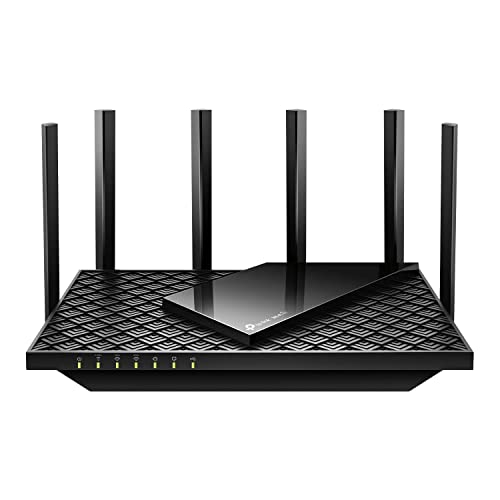
True Score
79794Experts
862kCustomers
Mixed Reviews
 SAVE $70$199.99$129.99
SAVE $70$199.99$129.99Read More
Snapshot
Reasons to Buy
- Good WiFi speeds
- Adequate range
- Simple set up
Reasons to Avoid
- Average download speeds
- Limited coverage
- Subscription-based security solutions
Specifications

# of LAN Ports 4 
Frequency Bands 2.4 GHz, 5.0 GHz, 6.0 GHz 
MU-MIMO Support Yes 
Wireless Standard AC, AX 
Mesh System Yes 
Quality of Service Prioritization Yes 
# of Phone Ports n/a 
# of WAN Ports 1 
App Compatible Yes 
Available Storage n/a 
Band Technology Tri 
Data Encryption Type WPA3 
Energy Star Certified n/a 
Integrated Modem No 
LAN Ports Gigabit Ethernet 
Number of Antennas 6 
Parental Controls Yes 
Processor Cores Triple 
Processor Speed 1.7GHz 
WiFi Range 2500 sq.ft 
WiFi Speed 2.4GHz 
Wired Speed 1000 Mb All Specs
Test Results
2.4 GHz Download speed (Mbits/s) 65 5 GHz Download speed (Mbits/s) 309 6 Ghz Download speed (Mbits/s) 318 Latency (ms) 9 Router Range (ft) 60 2.4 GHz Upload speed (Mbits/s) 0 5 GHz Upload speed (Mbits/s) 0 6 Ghz Upload speed (Mbits/s) 0 All Tests
All Retailers
- $129.99$200Save $70
- $149.99$180Save $30
- $159.00
Our Verdict
If you’re searching for a budget-oriented tri-band router that provides robust parental controls, the TP-Link Archer AXE75 might just be what you need. This device stands out for its ability to safeguard children online, thanks to its comprehensive parental controls. However, it’s not just about safety; the router also performs well. With a 2.4 GHz download speed of 65.05 Mbits/s, a 5 GHz download speed of 309.1 Mbits/s, and a 6 GHz download speed of 317.9 Mbits/s, coupled with an impressively low latency of just 9 ms, quicker than the Asus ROG GT6 Mesh, it offers a seamless internet experience. Such speed and responsiveness are key for demanding activities like HD video streaming and immersive online gaming, making it a versatile solution for a family’s diverse internet needs.
The Archer AXE75 supports a range of features that are paramount for a WiFi router with parental controls. Its strengths in providing a secure connection through advanced data encryption and the ease of managing network priorities via quality of service (QoS) prioritization compensate for this. Moreover, its compatibility with various apps and support for MU-MIMO technology enhances user experience by allowing multiple devices to connect efficiently.
Considering other use cases, the TP-Link Archer AXE75 shows potential beyond just offering parental controls. Its performance metrics suggest it could be well-suited for small business environments where reliable connectivity and network security are essential. Its performance, security features, and usability offerings make it an excellent choice. For families and small business owners alike, this router promises a balance of safety, speed, and reliability, ensuring a seamless online experience for all users.
Read Less

Best Overall

Runner Up

Best Value

Best Budget

Best Mid-Range

Premium Pick
Eero Max 7
The Eero Max 7 offers exceptional speeds, extensive coverage, and robust parental controls, making it a top-tier choice for high-performance home networks.
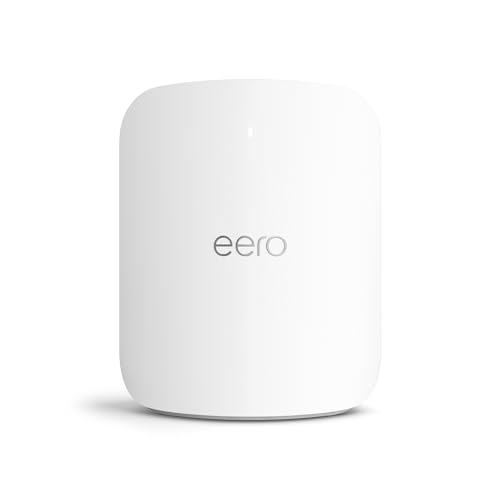
True Score
79797Experts
85314Customers
Mixed Reviews
 SAVE $120$599.99$479.99
SAVE $120$599.99$479.99Read More
Snapshot
Reasons to Buy
- Exceptional Download WiFi Speed
- Easy Installation and Configuration
- Low Latency
Reasons to Avoid
- Poor 2.4 GHz Upload Speeds
- Short Range of Coverage
- Limited Port Space
Specifications

# of LAN Ports 4 
Frequency Bands 2.4 GHz, 5.0 GHz, 6.0 GHz 
MU-MIMO Support Yes 
Wireless Standard BE 
Mesh System Yes 
Quality of Service Prioritization No 
# of Phone Ports n/a 
# of WAN Ports 1 
App Compatible Yes 
Available Storage 4000MB 
Band Technology Tri 
Data Encryption Type WPA2-Personal, WPA3-Personal 
Energy Star Certified No 
Integrated Modem No 
LAN Ports 2 Gb Ethernet 
Number of Antennas 10 
Parental Controls Yes 
Processor Cores Quad 
Processor Speed – 
WiFi Range 2500 sq.ft 
WiFi Speed 4.3 Gb 
Wired Speed 10000 Mb All Specs
Test Results
2.4 GHz Download speed (Mbits/s) 96 5 GHz Download speed (Mbits/s) 1,078 6 Ghz Download speed (Mbits/s) 1,223 Latency (ms) 7 Router Range (ft) 90 2.4 GHz Upload speed (Mbits/s) 75 5 GHz Upload speed (Mbits/s) 411 6 Ghz Upload speed (Mbits/s) 638 All Tests
All Retailers
- $479.99$600Save $120
- $479.99$600Save $120
- $479.99$600Save $120
Our Verdict
If you don’t mind paying more for a tr-band router with parental controls, the Eero Max 7 offers impressive speeds and coverage. Its support for a mesh system ensures comprehensive coverage throughout your home, which is vital for managing what your children access online from different corners of the house. Additionally, its data encryption and quality of service prioritization stand out, safeguarding your family’s online activities while ensuring that essential tasks get the bandwidth they need.
In terms of performance, the Eero Max 7 showcases its prowess with an exceptional 5 GHz download speed of 1078.5 Mbits/s and upload speeds of 410.6 Mbits/s, making it best-in-class for high-speed internet users. This capability is particularly beneficial in homes where streaming high-definition content and online gaming are daily activities, ensuring smooth and uninterrupted experiences. Its low latency of 7 ms further enhances this, offering a responsive and reliable connection critical for real-time applications like online gaming and video conferencing.
The Eero Max 7’s impressive 6 GHz download speed of 1222.5 Mbits/s and upload of 638 Mbits/s, only surpassed by the Asus ROG GT-AXE16000, shows it could also excel in environments demanding the latest high-speed connectivity, such as tech-savvy households or small businesses looking to future-proof their network infrastructure. Given these attributes, the Eero Max 7 is a versatile and powerful router, offering robust parental controls and a solid foundation for a high-performance home network.
Read Less

Best Overall

Runner Up

Best Value

Best Budget

Best Mid-Range

Premium Pick
Eero Pro 6E
The Eero Pro 6E offers impressive speeds and robust parental controls, making it ideal for families seeking seamless connectivity and online safety.
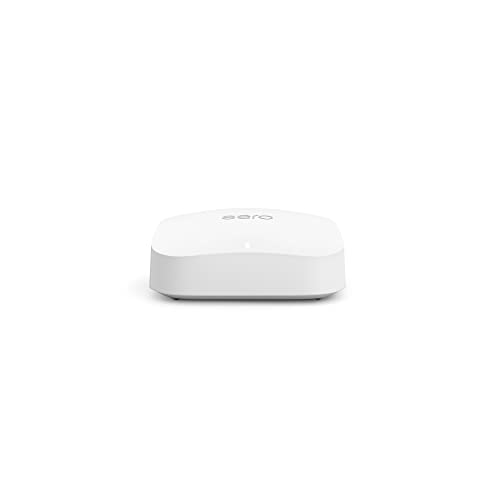
True Score
797812Experts
856kCustomers
Mixed Reviews
 SAVE $65$249.99$184.99
SAVE $65$249.99$184.99Read More
Snapshot
Reasons to Buy
- Good throughput speeds
- Good coverage
- Good smart device support
Reasons to Avoid
- Lacks included security and parental control features
- Not as consistent as some WiFi 6E routers
- Limited wired connectivity
Specifications

# of LAN Ports 1 
Frequency Bands 2.4 GHz, 5.0 GHz, 6.0 GHz 
MU-MIMO Support Yes 
Wireless Standard AC, AX, N 
Mesh System Yes 
Quality of Service Prioritization n/a 
# of Phone Ports n/a 
# of WAN Ports 1 
App Compatible Yes 
Available Storage 4000MB 
Band Technology Tri 
Data Encryption Type WPA2-PSK, WPA3-Personal 
Energy Star Certified No 
Integrated Modem No 
LAN Ports 1 Gb Ethernet 
Number of Antennas 7 
Parental Controls Yes 
Processor Cores Dual 
Processor Speed 1Ghz 
WiFi Range 6000 sq. ft 
WiFi Speed 1.6 Gb 
Wired Speed 2300 Mb All Specs
Test Results
2.4 GHz Download speed (Mbits/s) 215 5 GHz Download speed (Mbits/s) 547 6 Ghz Download speed (Mbits/s) 777 Latency (ms) 0 Router Range (ft) 85 2.4 GHz Upload speed (Mbits/s) 0 5 GHz Upload speed (Mbits/s) 111 6 Ghz Upload speed (Mbits/s) 0 All Tests
All Retailers
- $184.99$250Save $65
- $184.99$250Save $65
- $184.99$250Save $65
Our Verdict
If you’re looking for a mid-range tri-band mesh router, the Eero Pro 6E offers impressive speeds and parental control capabilities at a more budget-oriented price. With mesh system support, this router extends comprehensive coverage across every corner of your home, ensuring seamless connectivity for educational content and safe browsing. Enhanced by quality of service prioritization, the Eero Pro 6E smartly allocates bandwidth to critical applications, making it adept for remote learning and leisure activities without compromising performance.
ts 2.4 and 5 GHz download speeds are impressive, at 214.83 Mbits/s, the highest on our list, and 547 Mdbits/s, respectively. These speeds are essential for high-bandwidth activities like streaming educational videos or participating in online classrooms, ensuring that learning experiences are uninterrupted and productive. Moreover, the Eero Pro 6E doesn’t lag in the latest 6 GHz band, boasting a download speed of 777.4 Mbits/s. This is only behind the more expensive Eero Max 7’s 1222.5 Mbits/s, making the Eero Pro 6E a more cost-effective choice for accessing ultra-high-definition content and virtual reality applications.
The Eero Pro 6E’s advanced features, such as data encryption and MU-MIMO support, underscore its commitment to security and efficient data handling. This router is not just about keeping children safe online; it’s also about providing a robust, secure, and efficient networking solution for the whole family. Whether for gaming, streaming, or even small business needs, the Eero Pro 6E’s performance across various test criteria suggests it is a versatile contender capable of meeting diverse household internet demands.
Read Less
Which Criteria Matters for Testing Best Wi-Fi Routers With Parental Controls?
By focusing on these criteria (2 required, 2 nice to have), anyone can quickly and easily compare these routers and how they’ll perform. This helps you make an informed decision and purchase a router that will meet your needs.
| CRITERIA | RANGE | REQUIRED | DEFINITION |
|---|---|---|---|
| 2.4 GHz Download Speed | > 50 Mbits/s | Yes | The maximum speed that the router can reach when downloading on the 2.4 GHz band. |
| 5 GHz Download Speed | > 200 Mbits/s | Yes | The maximum speed that the router can reach when downloading on the 5 GHz band. |
| Router Range | > 50 ft | No (Nice to have) | How far a device can be from a router before the signal starts degrading. It is worth noting that 2.4 GHz reaches further than 5 GHz. |
| Latency | < 30 ms | No (Nice to have) | The delay that is created by a signal being sent by the router and then received. |
Our Trusted Data Sources
We looked at 120+ router reviewers and found that 46 are trustworthy (60%+ Trust Rating). The three we have listed below are our most trusted for routers.
- James Morris – Kit Guru, LinkedIn
- Matt Spencer – TechGearLab, LinkedIn
- Brian Nadel – Tom’s Guide, MuckRack
Interested in a comprehensive analysis of our data sources? We’ve got you covered. Below, you’ll find a detailed list of every router review website we’ve identified, organized by their respective Trust Ratings from highest to lowest. But we didn’t stop there. We’ve meticulously reviewed each publication and verified the data by checking whether the authors have bio links to MuckRack or LinkedIn. We’re committed to not only checking the facts but ensuring their veracity.
Router Test Data & Results
Disclaimer:
Evaluating router performance is more than hardware analysis. While hardware tests are straightforward, the challenge lies in contextualizing the results within the limits of real-world usage. Routers operate under conditions that testers cannot fully standardize, including variations in Internet Service Providers (ISPs), network traffic congestion, discrepancies between advertised and actual internet speeds, and the physical layout of homes. These factors introduce a degree of unpredictability, making it hard to draw universal conclusions. As such, our router recommendations aim to provide useful general guidance, accommodating a wide range of home environments and internet setups.
1. 2.4 GHz Download Speed (Mbits/s)
The oldest and slowest of the bands on a router is the 2.4 GHz band, but it sticks around for a reason. Generally speaking, while this band features the slowest available speeds and has the lowest bandwidth, but also reaches out the furthest. It’s not the best band to connect to connect if you need high speeds, but if you just need to be connected for light browsing or anything that’s low bandwidth, it works. Alternatively, if you own a lot of old devices, this band may be the only band they can “see” and therefore, use.
Given the age of the band, top speeds on 2.4 GHz cap out very quickly. We recommend a speed of at least 50 Mbits/s, but if you aren’t really going to be using this band for anything other than checking web pages, you can go lower. It’s worth noting, though, that this might lead to a more frustrating and laggier time on modern sites with lots of scripting and high-quality images.
2.4 GHz Download Speed
> 50 Mbits/s
Acceptable range of performance
Definition: The top speed the router reaches downloading on the 2.4 GHz band.
Units of Measurement: Mbits/s (megabits per second)
Tools to Measure: Speed-checking software
Why It’s Important:
For older devices or for connecting at a longer range, the 2.4 GHz frequency is the only one that you’ll be able to use, so it should have usable speed.
2.4 GHz Download Speed (Mbits/s; higher is better; 0 = No Data)
2. 5 GHz Download Speed (Mbits/s)
The much faster 5 GHz band offers up much greater bandwidth and is much, much better at meeting high-speed demands. Streaming high-quality video, using streaming services, gaming, downloading large files and games – the 5 GHz band is what makes all of these activities quick and bearable. It reaches a lower range than the 2.4 GHz band, but it’s also much faster, so you’ll use it more, especially on newer devices that actually support the band.
Given how much you’ll be using this band, we recommend a speed of at least 200 Mbits/s to ensure you’re able to enjoy streaming and gaming on at least a few devices simultaneously. Any lower and you start to run into real bottleneck concerns, such as endless buffering, lagging, or drops in connection.
5 GHz Download Speed
> 200 Mbits/s
Acceptable range of performance
Definition: The top speed the router reaches downloading on the 5 GHz band.
Units of Measurement: Mbits/s (megabits per second)
Tools to Measure: Speed-checking software
Why It’s Important:
This band is used by most modern devices and offers greater speeds that enable activities like gaming and HD streaming on multiple devices.
5 GHz Download Speed (Mbits/s; higher is better; 0 = No Data)
3. Router Range (ft)
Router Range
> 50 ft
Acceptable range of performance
Definition: The distance the router transmits reliable signal out to before performance and speed degrades.
Units of Measurement: Feet (ft)
Tools to Measure: Measuring Tape
Why It’s Important:
Range impacts how far you’ll get a reliable connection in your home, and whether you’ll need extenders or not.
Router range is exactly what the name suggests: how far can you get from the router before you start experiencing issues with your connection? The complicating factor is the simple fact that range depends on the band you’re using. 2.4 GHz is a band that offers greater range, so it gives tests results that show a greater range than tests that use the 5 GHz band. In general, our research found most publications used the 5 GHz band, so our recommendations are based on that.
As such, we recommend your router have a range of at least 50 ft. This gives you a good “bubble” around the router that you can connect to, but it’s important to know that things like the walls in your home can cause issues. Thicker walls block more signal, thinner walls block less. Some materials will also do a better job than others will at stopping signal, so if you see a router with a range of 65 ft, know that it might not reach that far in your home. It could reach further – or not nearly as far. This is also why you get dead zones in your home – it’s a matter of geometry and materials.
Router Range (ft; higher is better; 0 = No Data)
4. Latency (ms)
Latency
< 30 ms
Acceptable range of performance
Definition: The time it takes for the router to send and then receive signals.
Units of Measurement: Milliseconds (ms)
Tools to Measure: Speed-checking software
Why It’s Important:
Latency is important to reduce delay when gaming and video conferencing.
On a router, latency refers to how long it takes for the router to send out and receive a signal. The longer it takes, the more delay there is between you sending and receiving data, which can introduce lag in video games and also makes video conferencing harder since the person you’re speaking with now has to contend with your delay and vice versa. If you’ve ever spent a call talking over someone because you don’t know they started talking a second ago, that’s latency.
For that reason, we recommend a latency below 30 ms. As low as you can get it is obviously preferable, but latency is another aspect of your internet connection that is hard to manage. Latency differs to every single place you connect to, and every ISP has its own latency they “add” because you have to connect to their service too. Latency creeps in from your ISP, from the site you’re requesting data from, from your router, and from your own onboard Wi-Fi antenna – and that’s just to name a few sources. If you’re gaming, you also have a delay introduced by your connection to game servers and the delay that exists on a hardware level when you input commands.
Latency (ms; lower is better; 0 = No Data)
Best Wi-Fi Routers With Parental Controls: Mistakes To Avoid
- Underestimating Coverage Requirements: Not considering the size and layout of your space can result in poor coverage. Evaluate your area and choose a router that provides sufficient range. For larger or more complex spaces, consider a mesh Wi-Fi system.
- Disregarding Speed Requirements: Ignoring your speed needs can result in network slowdowns. Ensure the router can handle high speeds, especially if you have many devices or use data-intensive applications like streaming and gaming.
- Choosing a Complex Management Interface: Opting for a router with a complicated setup and management process can be frustrating. Look for routers with user-friendly interfaces and parental control apps that simplify configuration and monitoring.
- Forgetting to Check for Regular Firmware Updates: Skipping routers that offer regular firmware updates can leave your network vulnerable. Choose routers from reputable brands that provide frequent updates to ensure security and performance.
The Best Wi-Fi Routers With Parental Controls Tests Compared
Product |
True Score
|
2.4 GHz D/L Speed
|
5 Ghz D/L Speed
|
6 GHz D/L Speed
|
Range
|
Latency
| |
|---|---|---|---|---|---|---|---|
| 85 |
|
|
|
|
| $449.00 $700 $251 |
| 83 |
|
|
|
|
| $202.24 $225 $23 |
| 80 |
|
|
|
|
| $399.99 $480 $80 |
| 79 |
|
|
|
|
| $129.99 $200 $70 |
| 79 |
|
|
|
|
| $479.99 $600 $120 |
| 79 |
|
|
|
|
| $184.99 $250 $65 |






